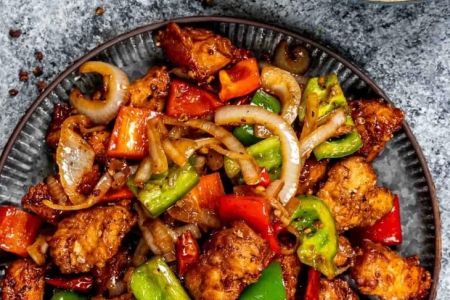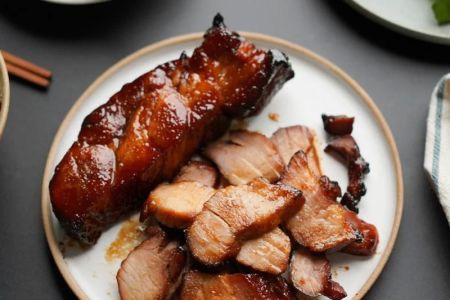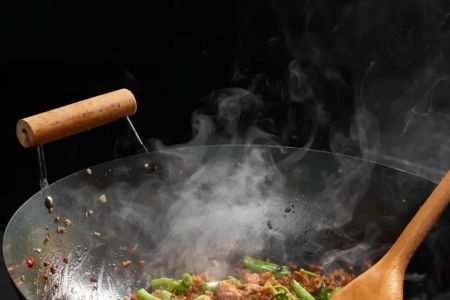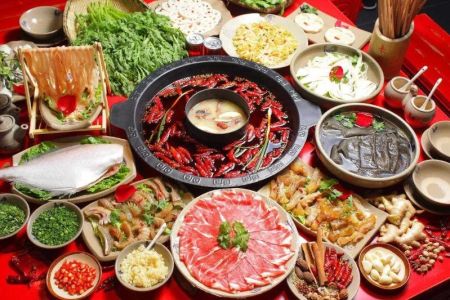Exploring Authentic Chinese Food in the U.S.
As someone who has been fortunate enough to travel and experience authentic Chinese cuisine in its home country, I can say that discovering Chinese food in the U.S. is an adventure of its own. Over the years, I’ve had the pleasure of tasting countless dishes from different regions of China, but it was only when I began to dig deeper into the offerings in the U.S. that I truly began to understand the complexity and diversity of Chinese food. Many people assume that Chinese food in the U.S. is just the takeout variety we see in boxes with chopsticks, but the reality is much more layered and intriguing. Let’s dive into the world of authentic Chinese food that’s being served across the country!
1. Understanding the Regional Diversity of Chinese Cuisine
One of the most exciting aspects of Chinese food is its regional diversity. As I began to explore more authentic Chinese restaurants in the U.S., I learned that Chinese cuisine is not one monolithic style. It’s made up of a variety of regional flavors, each with its own unique ingredients and cooking techniques. To fully appreciate authentic Chinese food, it’s important to understand these regional differences.
For instance, the flavors of Cantonese cuisine are known for being fresh, mild, and subtly sweet. This style is most familiar to many Americans, with dishes like sweet and sour chicken and dim sum being common in Chinese-American restaurants. In contrast, Sichuan cuisine is bold and spicy, with a signature heat derived from Sichuan peppercorns. If you enjoy dishes like Mapo Tofu or Kung Pao Chicken, you’re likely familiar with the flavors of Sichuan.
Then there’s the rich and hearty fare of Northern China, where wheat-based dishes like dumplings and noodles take center stage. I remember having a hand-pulled noodle dish in a restaurant in Chicago that completely changed the way I thought about pasta. These diverse flavors are a glimpse into the vastness of Chinese food, and they each bring something unique to the table.
2. Finding Authentic Chinese Restaurants in the U.S.
While it’s true that Chinese food in the U.S. has been heavily influenced by local tastes and expectations, there are plenty of spots where you can experience authentic flavors. As I ventured across different cities, I found that some of the most authentic restaurants are often tucked away in neighborhoods with large Chinese communities. From San Francisco to New York, there’s an abundance of Chinese eateries that offer everything from traditional family-style dinners to high-end tasting menus.
One of my best experiences was in a small Sichuan restaurant in Queens, New York, where the chef had emigrated from Chengdu, the heart of Sichuan cuisine. The dishes were vibrant, intensely spicy, and packed with flavor, just as I had experienced in China. Finding these hidden gems often requires a little research or asking locals for recommendations. Yelp reviews and word-of-mouth are great tools, but nothing beats the experience of just walking into a place and being welcomed by the rich aroma of Chinese cooking.
3. Popular Authentic Dishes to Try in the U.S.
If you’re new to authentic Chinese food, there are a few dishes that will give you a real taste of what traditional Chinese cuisine has to offer. From dumplings to braised pork, here are a few standouts that I highly recommend:
- Hot Pot: A communal dish that allows diners to cook their own ingredients in a boiling broth. It’s an interactive dining experience where you can try a variety of meats, vegetables, and noodles.
- Dim Sum: A Cantonese tradition of small, bite-sized dishes served in steamers or on small plates. Dim sum is perfect for trying a variety of flavors in one meal, from dumplings to buns and everything in between.
- Mapo Tofu: A spicy and aromatic dish from Sichuan province made with soft tofu, minced pork or beef, and a fiery sauce that includes garlic, ginger, and Sichuan peppercorns.
- Char Siu: This Cantonese-style barbecued pork is marinated in a sweet and savory sauce, then roasted to perfection. It’s often served with rice or noodles and is one of my personal favorites.
- Peking Duck: A luxury dish that originated in Beijing, Peking duck is known for its crispy skin and tender meat. It’s often served with pancakes, hoisin sauce, and sliced vegetables for a deliciously memorable meal.
4. The Importance of Traditional Chinese Ingredients
When I first began exploring authentic Chinese food, I quickly realized that the ingredients used in Chinese cooking are just as important as the recipes themselves. Unlike American cuisine, which often relies on a few core ingredients like butter or olive oil, Chinese cuisine uses a wide array of distinctive ingredients that give each dish its unique flavor profile.
Some of these ingredients include soy sauce, rice wine, sesame oil, and fermented bean pastes. Spices such as star anise, cinnamon, and five-spice powder are also commonly used to add depth to the dishes. But it’s the use of fresh herbs and vegetables, like bok choy, Chinese broccoli, and Chinese eggplant, that truly set Chinese cuisine apart.
When I started to cook Chinese food at home, I made it a priority to find authentic ingredients. My local Asian grocery store became a treasure trove, where I’d find items like dried mushrooms, Sichuan peppercorns, and black vinegar. These ingredients bring an entirely new level of authenticity to dishes, and I recommend exploring them if you want to get serious about Chinese cooking.
5. Understanding the Cultural Significance of Chinese Food
Beyond the flavors and ingredients, there’s also a deep cultural significance behind Chinese food. In China, food plays an essential role in family gatherings, celebrations, and even traditional medicine. Each dish carries its own meaning—whether it’s for good fortune, longevity, or to honor ancestors.
During a visit to a family-owned Chinese restaurant in Los Angeles, I learned that many of the dishes served during Chinese New Year celebrations are believed to bring prosperity. For example, fish is often served to symbolize surplus, while dumplings are thought to bring wealth because of their shape, which resembles ancient Chinese gold ingots. Food, in this sense, is not just sustenance—it’s a way to connect with culture, family, and tradition.
6. The Evolution of Chinese Food in the U.S.
Chinese food in the U.S. has evolved significantly over the years. Early Chinese immigrants in the 19th century created a version of Chinese food that catered to American tastes, resulting in dishes like General Tso’s chicken and egg rolls, which are now iconic in the U.S. The Chinese-American food we’re familiar with today is often a fusion of traditional Chinese cooking with local ingredients and preferences.
However, as the Chinese community in the U.S. grew, more authentic regional Chinese restaurants began to appear, offering a broader range of flavors and techniques. As a result, there’s now a vibrant and growing scene of authentic Chinese restaurants, especially in cities with large Chinese populations like San Francisco, New York, and Los Angeles.






![Top Chinese Restaurants for Authentic Cantonese Cuisine in [Your City]](https://img.gochinarose.com/d33/2507/4157910400_450x300.webp)
